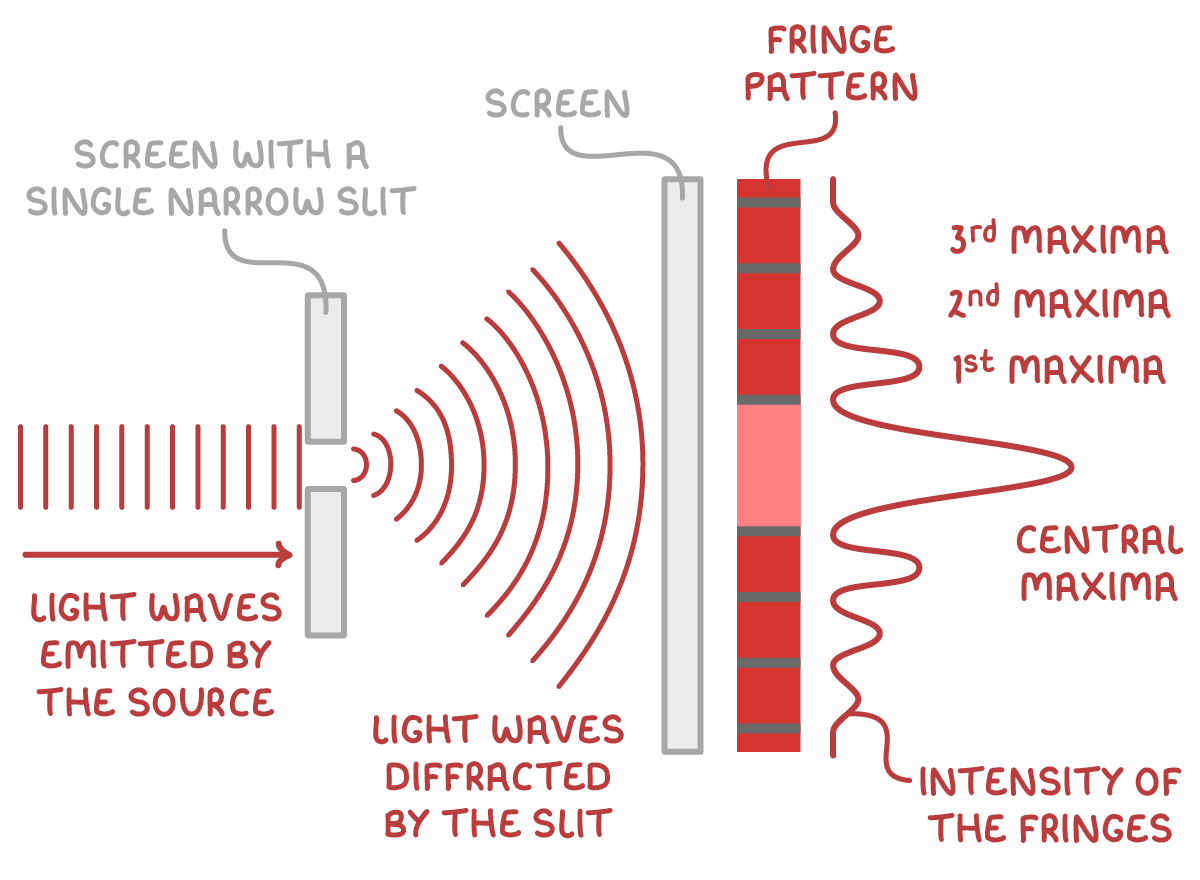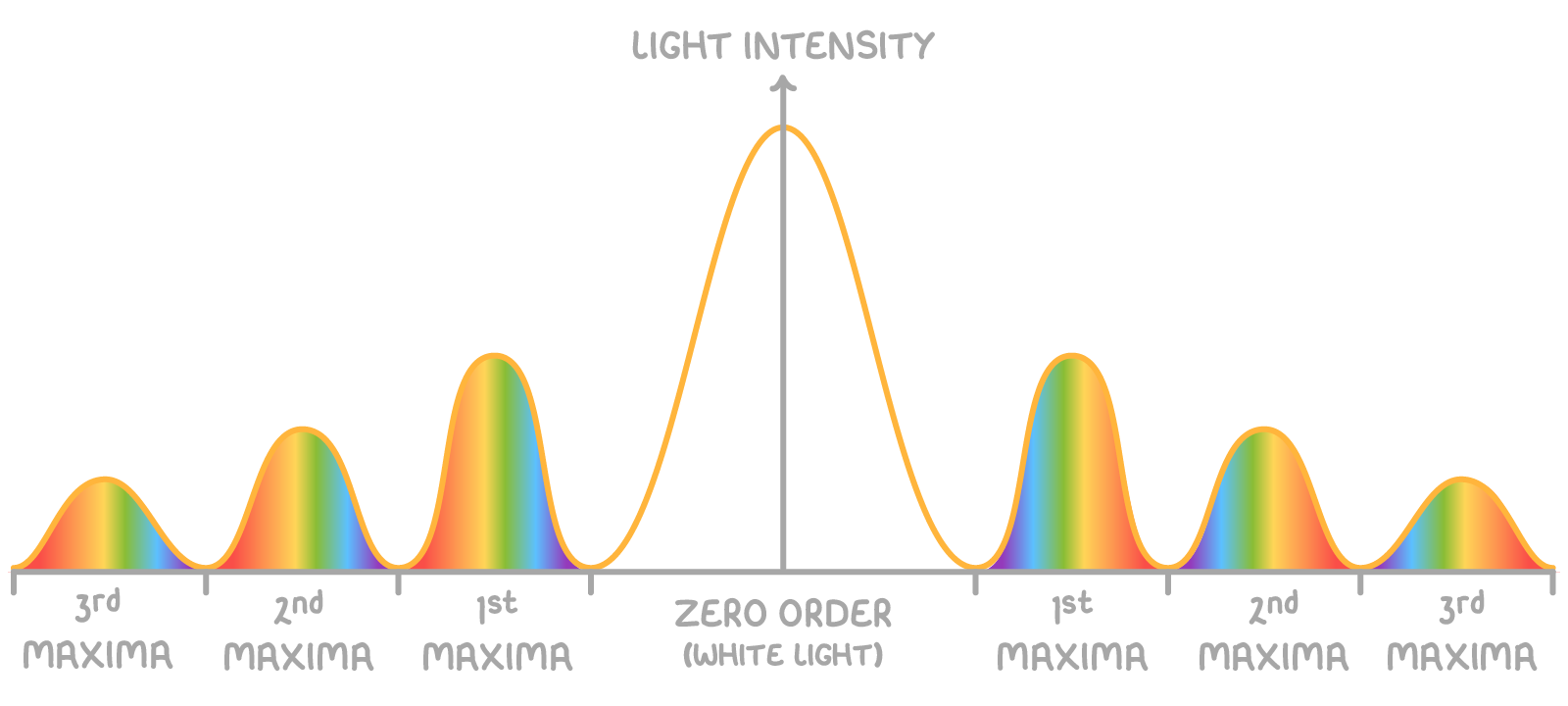Single Slit Diffraction
This lesson covers:
- What diffraction is and the impact of gap size on diffraction
- Diffraction of waves around obstacles
- The role of monochromatic light in observing clear diffraction patterns
- How laser light creates distinct fringe patterns
- Comparison of diffraction patterns produced by monochromatic and white light
What is diffraction?

Diffraction occurs when waves, like light or sound, spread out or bend as they pass through openings or move around obstacles. The extent of diffraction is influenced by the size of the opening compared to the wavelength of the wave.
- Negligible diffraction - Occurs when the gap is significantly larger than the wavelength of the wave.
- Noticeable diffraction - Happens when the gap size is about the same as a few wavelengths.
- Maximum diffraction - Seen when the gap size is approximately equal to the wavelength.
For example, sound waves can diffract through doorways, making it possible to hear someone from around a corner. Light diffraction, however, is less noticeable in everyday life because typical openings like doorways are much larger than the wavelengths of visible light.
Diffraction around obstacles
Waves can also diffract when they encounter obstacles, bending around the edges of the obstacle. This creates a 'shadow' zone where the direct waves are blocked.
- Wider obstacles: These cause more blocking of the waves, resulting in longer shadows.
- Narrower obstacles: They allow more diffraction, leading to shorter shadows.
Using monochromatic light
For clear observation of light diffraction, a monochromatic light source is ideal. Monochromatic light consists of a single wavelength and hence a single colour. White light, which contains multiple wavelengths, does not produce distinct diffraction patterns.
Laser diffraction patterns
When a laser (which is monochromatic) shines through a narrow slit, it creates a pattern of bright and dark fringes on a screen. This phenomenon results from interference:
- Bright fringes: These are areas of constructive interference where wave peaks align.
- Dark fringes: These are areas of destructive interference where wave peaks and troughs align and cancel each other out.

White Light vs Laser Light
When white light, which comprises various wavelengths, passes through a slit, it creates a spectrum of colours instead of distinct fringes. This is because each wavelength diffracts differently, blending the patterns together.
